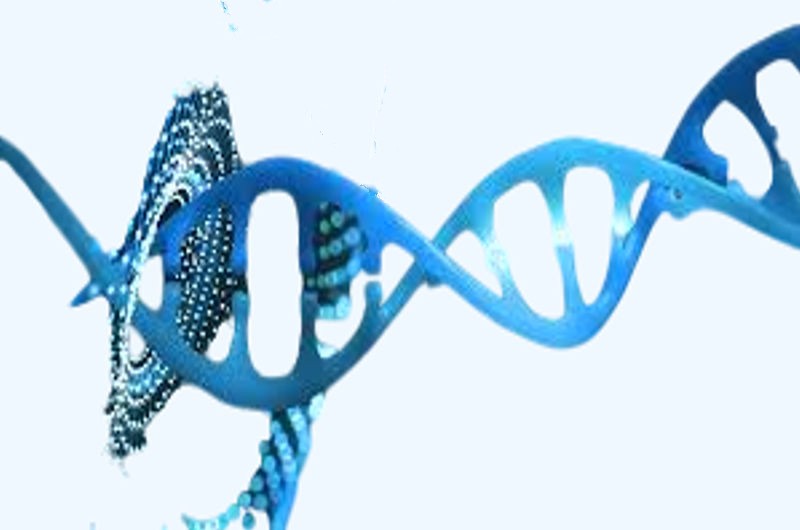Unlocking Life’s Blueprint: The Power and Potential of Genomic DNA
Introduction: The Master Code of Life
Hidden within every cell of your body lies an extraordinary molecular library—your genomic DNA. This intricate biochemical manuscript contains all the instructions needed to build, operate, and maintain a living organism. From determining your eye color to influencing your risk of disease, genomic DNA serves as nature’s most sophisticated programming language, written in a chemical alphabet just four letters long (A, T, C, G).
Recent advances in sequencing technologies and bioinformatics have transformed our ability to read, interpret, and even edit this fundamental code of life. This article explores the fascinating world of genomic DNA—its structure, function, and revolutionary applications that are reshaping medicine, agriculture, and our understanding of evolution itself.
1. The Architecture of Life: Understanding Genomic DNA
The Molecular Masterpiece
The entirety of an organism’s genetic material is represented by its genomic DNA, which is contained in chromosomes inside the cell nucleus.Its iconic double helix structure, discovered by Watson and Crick in 1953, remains one of science’s most elegant revelations.
Key characteristics:
– There are 3.2 billion base pairs in the human genome.
– Contains approximately 20,000-25,000 protein-coding genes
– One cell’s DNA would extend roughly two meters if it were unfolded.
– Packaged with histone proteins into chromatin fibers
Coding vs. Non-Coding: The Surprising Truth
– In reality, just 1% to 2% of human genomic DNA codes for proteins.The remaining “non-coding” DNA, once dismissed as “junk,” is now recognized to contain:
– Regulatory elements controlling gene expression
– Structural components of chromosomes
– Evolutionary relics and viral DNA fragments
– Non-coding RNAs with critical functions
2. Decoding Life: The Genomic Revolution
Sequencing Breakthroughs
The journey from the first human genome sequence (completed in 2003 after 13 years and $3 billion) to today’s capabilities represents one of science’s most dramatic technological accelerations:
Modern sequencing:
– It currently takes less than 24 hours to sequence an entire genome.
– Costs have plummeted to under $600 per genome
– Portable sequencers (like Oxford Nanopore) enable real-time analysis
The Human Genome Project and Beyond
This international effort provided our first complete reference human genome, but we’ve since learned that:
Individual genomes vary by four to five million variations.
– Structural variations (deletions, duplications) are common
-Another layer of information is created by epigenetic changes.
3. Genomic DNA in Medicine: Precision Healthcare
Diagnostic Power
Genomic sequencing is transforming disease diagnosis:
– It is now possible to identify rare genetic abnormalities in days as opposed to years.
– Cancer genomics guides targeted therapy selection
– Pharmacogenomics predicts individual drug responses
Real-world impact:
– The NIH’s Undiagnosed Diseases Program has solved 35% of previously mysterious cases
– Tumor DNA sequencing improves cancer treatment success rates by up to 30%
Preventive Potential
Polygenic risk scores analyze thousands of DNA variants to predict:
– Cardiovascular disease risk
– Diabetes susceptibility
– Neurodegenerative disease probability
4. Agricultural and Industrial Applications
Crop Improvement
Genomic DNA analysis enables:
– Marker-assisted breeding for drought-resistant crops
– Disease-resistant livestock development
– Precision gene editing using CRISPR-Cas9
Success story:
Genomic selection has doubled the rate of genetic gain in dairy cattle over traditional methods.
Industrial Biotechnology
Microbial genomic DNA is being harnessed for:
– Biofuel production
– Environmental remediation
– Novel material synthesis
5. Evolutionary Insights and Anthropology
Genomic DNA serves as a molecular time machine:
– Traced human migration patterns out of Africa
– Revealed interbreeding with Neanderthals and Denisovans
– Identified genetic adaptations to local environments
Surprising finding:
– The genomes of all non-Africans include 1-4% Neanderthal DNA.
6. Ethical Considerations and Challenges
Although genomic DNA has a lot of potential, it also poses significant queries:
– Privacy concerns regarding genetic data
-Concerns about equity in access to genomic medicine
– Psychological impact of genetic risk information
– Potential misuse of gene editing technologies
7. The Future of Genomic DNA Research
Emerging frontiers include:
– Single-cell genomics revealing cellular heterogeneity
– Long-read sequencing overcoming current limitations
– Epigenome mapping adding another dimension
-Storage of DNA data as a possible archiving media
Horizon scanning:
The Human Pangenome Project aims to create a more inclusive reference representing global genetic diversity.
Conclusion: From Code to Cure
Genomic DNA represents both our biological heritage and medical future. As sequencing becomes routine and interpretation more sophisticated, we’re transitioning from simply reading this code to truly understanding and harnessing its power. The implications span from personalized medicine to sustainable agriculture and beyond.
What began as curiosity about the chemical basis of heredity has blossomed into one of science’s most transformative fields. The genomic revolution reminds us that within each cell lies not just our past, but the potential to shape our future—one base pair at a time.


